A-12 Avenger II attack aircraft. Seven and a half billion for failure
The ATA program (Advanced Tactical Aircraft - Advanced Tactical Aircraft) was launched in 1983. At first, naval commanders wanted to make a single project of a universal aircraft. He was supposed to be the basis for the attack aircraft-bomber, fighter, as well as several other auxiliary machines, for example, a jammer or a scout. However, soon from such bold plans refused. Firstly, it became clear that such a project would be too expensive, and secondly, there were options for upgrading existing F-14 aircraft. Finally, the fight against air opponents could now be placed on the newest F / A-18 fighter-bombers that had just entered service. Thus, it was possible to attend to the creation of a new deck attack aircraft.
In the mid-eighties, the shape of the future aircraft began to take shape. Since he no longer had to intercept enemy aircraft, they decided to make it subsonic and equip it with onboard electronic equipment, “sharpened” to work on ground targets. In addition, in accordance with the latest trends in the US aircraft industry, a promising ATA attack aircraft should be made unobtrusive to enemy radar. Such a requirement was due to the need to work, including in conditions of serious air defense of the enemy. Since the task was rather complicated, the Pentagon attracted two groups of aircraft manufacturers to research. The first included the company McDonnell Douglas and General Dynamics, and the second - Grumman, Northrop and Vought.
During the ATA project, a variety of aerodynamic variants of the new aircraft were considered. From simple processing of an F / A-18 airframe with reduced radar visibility to the most fantastic designs. For example, a variant with a backward swept wing was seriously considered. However, the flying wing was chosen rather quickly from the whole variety of arrangements, since it had the best combination of stealth and flight characteristics. At the very end of 1987, the customer, represented by the Navy and the ILC, decided on which firms would be engaged in further design work. The main contractors for the project are McDonnell Douglas and General Dynamics.
The Navy and Marine Corps intended to purchase a total of ATA 450-500 attack aircraft. However, they did not forget about the economic side of things. The contract for the development of the aircraft clearly stipulated the financial conditions. Thus, the recommended cost of development was 4,38 billion dollars, and the marginal value was 4,78 billion. In addition, Pentagon financiers took interesting measures in the event that the project was more expensive. In order for development firms to be interested in maintaining an acceptable cost, the military insisted on the following conditions. If the cost of the program exceeds the recommended, then the military department pays only 60% of the over-expenditure, and the contractors assume the rest. If they fail to meet the marginal cost, then all the extra costs are borne by them, and the Pentagon pays only the recommended amount of expenses.
Around the same time, the main aspects of the appearance of a promising aircraft were fully formed. The designed attack aircraft was a flying wing of a triangular shape with a swept 48 ° along the leading edge and a protruding lantern in the nose. In addition to the lantern, no units above the wing surface protruded - ATA fully complied with the definition of a flying wing. This feature of the aircraft was due to the requirements for stealth. It was at this time that the development of the B-2 strategic bomber was being completed, and the creators of ATA decided to follow the same path as the engineers at Northrop Grumman. Ensuring stealth was planned not only the shape of the wing. Almost all the basic elements of the power set and plating were proposed to be made from carbon-fiber composites. Similar materials had previously been used repeatedly in the US aircraft industry, but ATA was to be the first aircraft in the United States with such a large proportion of plastic in the design.
The overall weight and dimensions of the aircraft were determined at the stage of the preliminary project and in the future almost did not undergo serious changes. With a wing body length in the 11,5 meter, the ATA attack plane was supposed to have a wing span in the 21 and a parking height in the 3,4 meter. The dry weight was assumed at the level of 17,5-18 tons, the maximum take-off - no more than 29-30 tons. Of these, up to 9500-9700 kilograms accounted for fuel placed in several tanks of complex shape.
Just a few months after the identification of development firms, the Pentagon changed its plans. Now the military were going to buy ATA attack aircraft, not only for the fleet and marines, but also for the Air Force. The total number of machines required was determined at the level of 850-860 units. Later, in 1990, the aircraft received its own designation. He was named A-12 Avenger II, in honor of the deck dive bomber-torpedo bomber from the Second World War Grumman TFB / TFM Avenger. The first flight of the aircraft was originally planned for the 1991 year, and the first mass-produced vehicles were to go to combat units no later than 1994-95. In general, plans for a new aircraft were more than optimistic, but expectations were not justified.
Even at the preliminary design stage, before the choice of development companies, the customer decided on the requirements for the power plant of the new aircraft. For unification and cost reduction, we chose the F412-GE-400 turbojet engines. Two of these engines provide traction for 6700 kgf. The engine air intakes were located on the front of the wing, below its edge. The air went to the engines through curved channels, thereby preventing radar radiation from entering the blades of the compressors. Before installing the engines on the A-12, it was intended to carry out a small technological change. It was planned to change the design of several auxiliary units, as well as install a new digital control system.
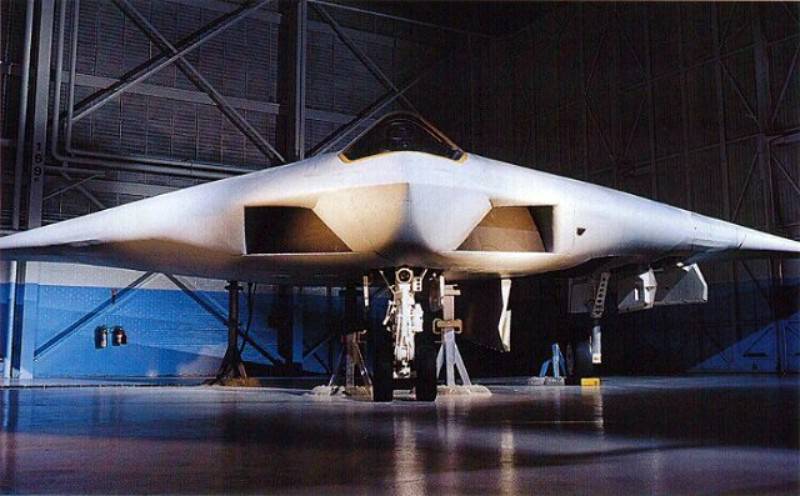
The desire to reduce the cost of the finished aircraft affected the composition of the onboard radio-electronic equipment. Designers firms McDonnell Douglas and General Dynamics tried to balance on the verge of high performance and relatively low prices. At the same time, the general layout of the aircraft forced them to apply several original solutions. The Westinghouse AN / APQ-183 was selected as the radar station, representing the development of the F-16 radar. Due to the specific shape of the wing-corps, this radar was equipped with two antennas with passive phased arrays at once. They were placed on the front edge, near the cockpit. The AN / APQ-183 radar could provide a search for ground, surface and air targets, allowed to follow the terrain, etc. Despite the general intentions to reduce the cost of the station, she received five computational modules with a performance of 125 Mflops each. As a result, the A-12 ground attack BRLS had combat potential at the fourth generation fighter level.
In addition to the radar, A-12 received an optical-electronic station with a thermal imaging channel produced by the same Westinghouse company. There were two modules in this station. The first of them followed a wide sector and was intended for flying at night or in adverse weather conditions, as well as for searching for targets. To attack it was necessary to use the second module with a narrow field of view. He could find and accompany ground and aerial targets, as well as provide information to the aiming complex.
Despite the need to reduce the cost of the program as a whole and of each aircraft in particular, the A-12 attack aircraft received a modern “glass” cockpit for two pilots. The pilot had at his disposal three multifunctional liquid-crystal indicators (one 8 XX8 inches and two 6 XX6) and an indicator on the windshield of the size 30 XX23. In the rear cabin of the navigator-operator there was one color display 8x8 inches and three monochrome smaller ones, 6x6. Control systems weapons distributed between the pilot and the navigator in such a way that the commander of the crew could single-handedly attack with certain types of weapons, as well as withstand enemy fighters.
In the middle part of the flying wing, on the sides of the engines, the A-12 had two relatively long cargo compartments. Two more volumes for weapons, but smaller, were located in consoles, immediately behind the niches of the main landing gear. It was possible to hang armament with a total weight of up to 3-3,5 tons on the suspension devices of the cargo compartments. However, because of their relatively small dimensions, the central compartments could only hold one 2000 lb caliber bomb each. Side arms compartments were originally designed for the transport and launch of air-to-air missiles AIM-120 AMRAAM. In the case of actions in an area with relatively weak air defense, the A-12 attack aircraft, at the cost of increasing the visibility for the radar, could carry twice as many weapons. In this case, up to 3,5 tons of load could be suspended on external nodes. It is noteworthy that the built-in weapons in the form of an automatic gun was not provided.
The A-12 was originally designed for the Navy and the ILC, so it was immediately adapted for use on aircraft carriers. For this console wing made folding. The folding axis was located immediately behind the side arms compartments. Interestingly, the decomposed wing of the A-12 attack aircraft had a significantly larger sweep compared to the F-14 fighter in the take-off configuration: the 21,4 meter against the 19,55; but at the same time, A-12 won by its size when folded, as its scope decreased to 11 meters against 11,6. The older A-6 in both cases had a smaller wingspan than the A-12. However, due to the “flying wing” architecture, the new aircraft won against everyone in terms of length. From the nose to the rear edge of the wing was just 11,5 meter. Thus, the new A-12 occupied significantly less space than the F-14 or A-6. The front landing gear was additionally strengthened for use with a steam catapult of aircraft carriers.
Although the A-12 was planned to be armed with missiles and guided bombs of relatively long range, the plane did receive the booking elements. Additional protection was given to the crew cabin, engines and a number of important units. Thanks to the “flying wing” scheme, it was possible to place the booking elements in such a way that the combat survivability of the aircraft dramatically increased. A-12, according to calculations, turned out to be more tenacious in 12 compared to A-6 and in 4-5 compared to F / A-18. Thus, the level of protection of the ground attack aircraft turned out to be approximately at the level of another aircraft of similar purpose, but “ground” - A-10.
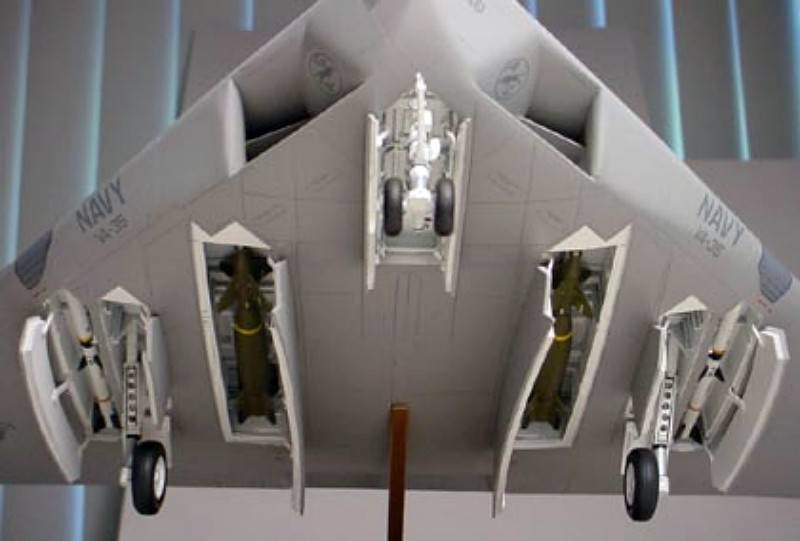
In the later stages of design, when not only the common features were determined, but also the smallest nuances were worked out, the designers of McDonnell Douglas and General Dynamics managed to calculate the expected flight characteristics of the advanced attack aircraft. With engines without an afterburner, it could accelerate to speeds in 930 km / h and fly to a distance of 1480-1500 kilometers. The practical ceiling of the car did not exceed 12,2-12,5 kilometers. With such flight data, the new A-12 could perform the tasks of attacking enemy targets at tactical depth. In other words, it was possible to fulfill all the tactical and technical requirements of the military.
The development of the new aircraft was proceeding at a rapid pace, but in the end this speed did not produce any result. By the end of 1989, it turned out that the recommended project budget was exceeded by almost a billion dollars. These costs, in accordance with the terms of the contract, should have been entirely borne by uneconomical developers. In addition, a number of technical problems persisted, transparently hinting at a further appreciation of the program. The Pentagon began to get nervous. While maintaining the planned volume of purchases, retooling of the Navy and the International Law Commission could cost 55-60 billions of dollars, which was significantly more than the originally planned amount. Development firms were forced to initiate additional negotiations to change the terms of the contract.
The military for a long time did not want to meet and soften the financial requirements for the project. At the same time, seeing a number of serious problems and the outlined disruption of the planned deadlines, the command of the Marine Corps refused to buy new aircraft. Thus, the order was reduced to 620 machines, and the planned production rate was cut from 48 to 36 attack aircraft per year. At this time, the designers had to urgently solve the problem with a grade of carbon fiber for some parts of the airframe. An alternative variety was found, but because of it, the aircraft in its most loaded form became heavier from the required 29,5 to 36 tons. This did not suit the sailors, because from the very beginning they demanded such a mass and dimensions that a single aircraft carrier lift could deliver two A-12 to the flight deck at once.
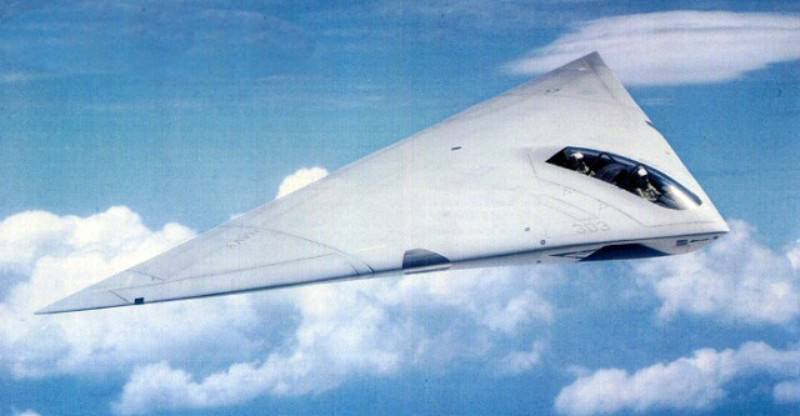
However, the assembly of the first prototype continued, although it was seriously behind schedule. As of January 1991, the delay was already 18 months and dissatisfied voices sounded louder on the sidelines of the US military. By the same time, the total costs of the Pentagon and development companies to develop a promising attack aircraft reached the mark of 7,5 billion dollars. The first flight, in turn, was once again postponed, now for 1992 year. All problems with money and deadlines ended 7 January 1991 of the year. After reviewing the project reports for the previous 1990 year, the command of the US Navy made the only possible correct decision. Project A-12 was closed due to unclear prospects and uncontrolled cost growth. Initially it was assumed that a total of approximately 45 billion dollars would be allocated for the purchase of aircraft, and each aircraft would cost no more than 50 million. But at the beginning of 91, the cost of an individual plane exceeded the mark of 85-90 million and in the future this figure could only increase.
History A-12 project ceased after a special order of the then US Secretary of Defense D. Cheney. He commented on the order as follows: “I have closed the project A-12. This decision was not easy, because we faced a very important task. But no one could tell me how much the whole program would cost and when it would end. Previous forecasts were inaccurate and outdated in just a few months. ”
Deck attack planes A-6 Intruder, which were replaced by the new A-12 Avenger II, served in the US Navy until 1997, after which they were written off. Currently, a number of EA-6B electronic warfare aircraft based on Intruders remain in service. With regard to ground attack, over the past fifteen years, such tasks are assigned solely to the F / A-18 fighter-bombers of various modifications. Creating a full deck attack aircraft is not planned.
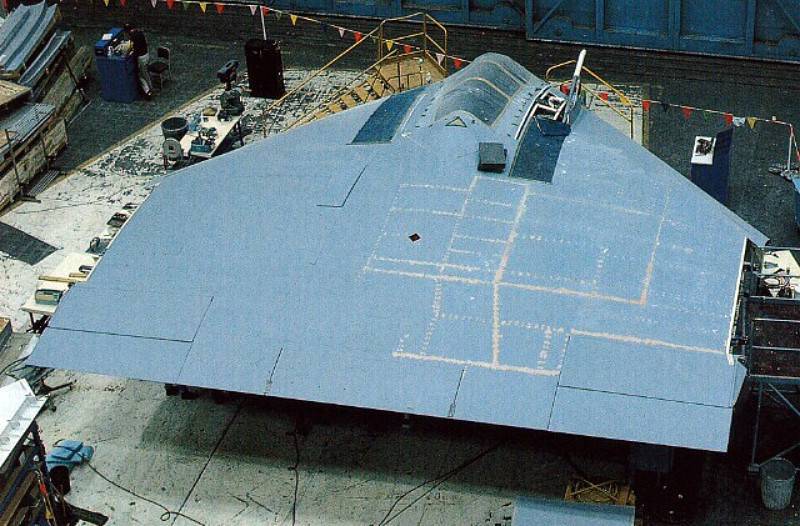
On the materials of the sites:
http://globalsecurity.org/
http://flightglobal.com/
http://paralay.com/
http://foreignaffairs.com/
http://jsf.mil/
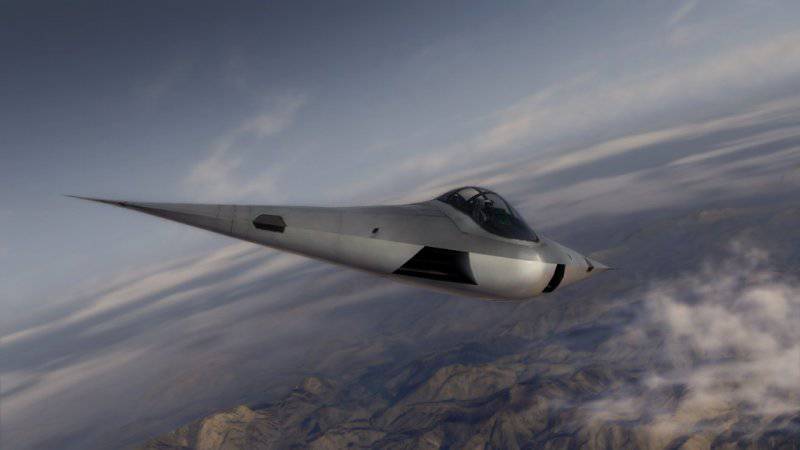
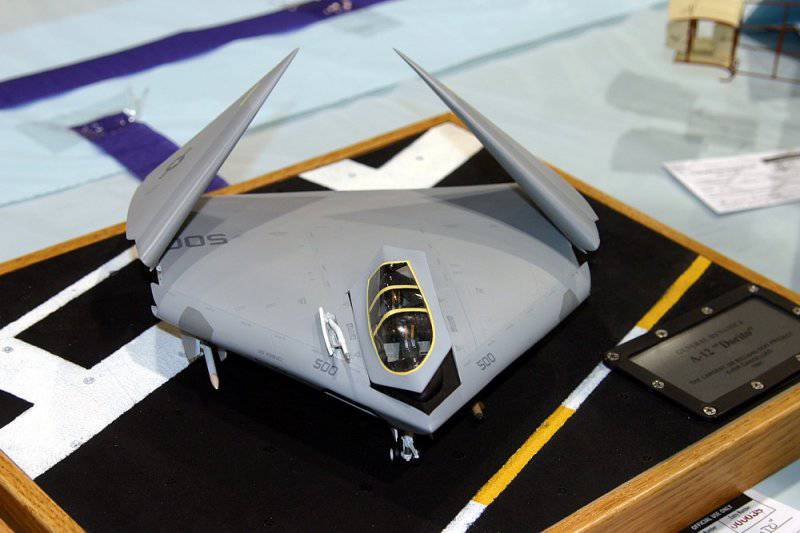
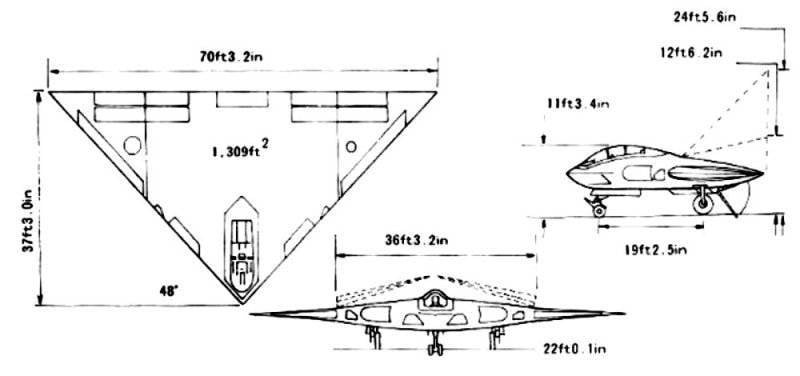
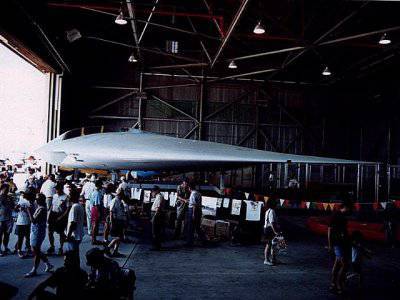
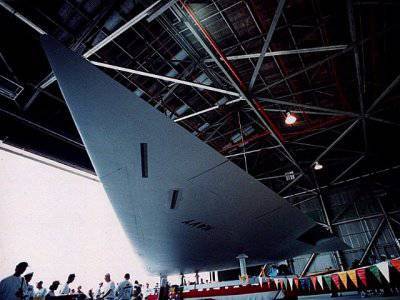
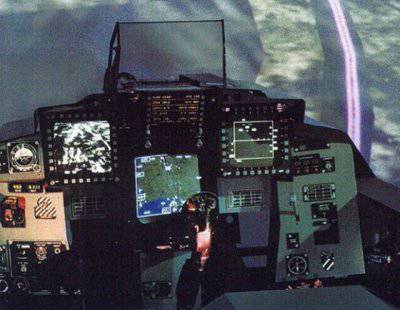
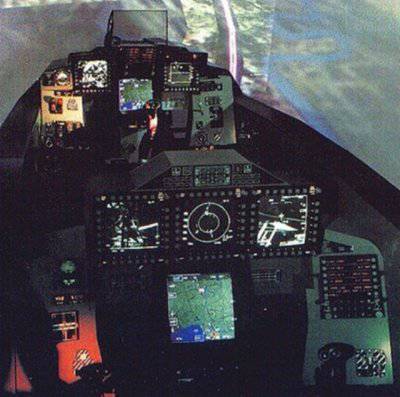
Information